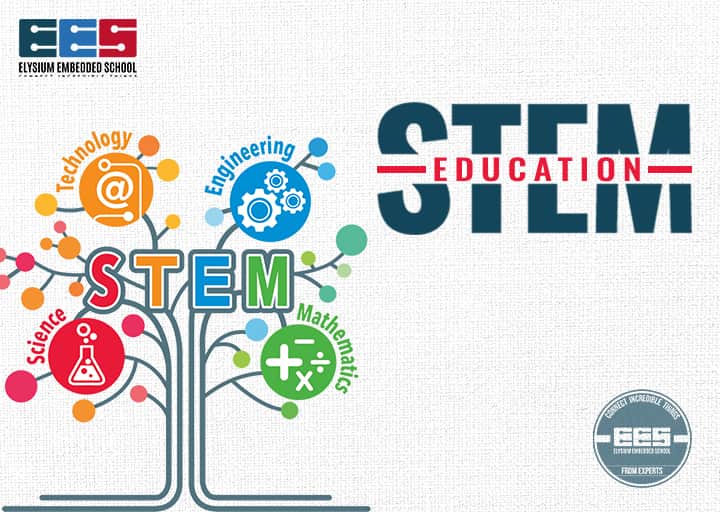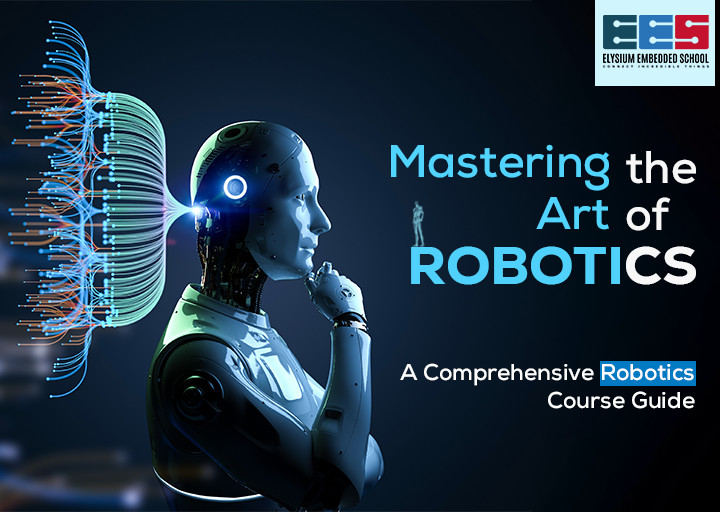
STEM Education
October 21, 2021
9 TOP IOT APPLICATIONS
December 15, 2021Table of Contents
Robotics with Python
Robotics with python is a high tech field of work in which machines can be misinterpreted as humans. One of the most revolutionary fields of information technology is Robotics. Robotics is thought to be the field that will have the greatest long-term impact on humans. The only question hanging in the balance is whether this impact will bring about a positive change in the world or inevitable regret. There are over 500 programming languages available today, but only a few have the computational power when it comes to robotics.
Robot Sensor data is processed, cognition is performed, and actions are planned using computer programs executed on a processor. Computer programmes are a set of instructions that operate on an input to generate an output.
Example: A robot’s face recognition programme will take an image of a person as input by scanning the image for a specific set of features and comparing these features to a library of known faces, finding a match, and then returning the person’s name an output. Every time the programme runs, it will execute the same set of instructions.
The majority of programming languages are written in plain text, which is simple to comprehend for humans. The programmes are then compiled into machine code, then executed by a processor (or byte code for a virtual machine to run).
What is a Python?
Python is the popular high-level programming language that can script the development and creation of applications for computer desktops, the World Wide Web, Machine Learning, Data Science, and many other platforms. Guido Van Rossum is Python’s father. Many organizations and platforms around the world use Python since it is a versatile programming language.
Python and the Raspberry Pi for Robotics
Python is the programming language that the Raspberry Pi runs on. Because a Raspberry Pi can control a robot, this makes it extremely relevant to robotics.
The Raspberry Pi Foundation has created a series of free online courses to teach people how to use a Raspberry Pi in robotics.
A Raspberry Pi (RPi) is more versatile than an Arduino because it works like a regular computer but lacks analogue-to-digital conversion features. Instead, the Raspberry Pi uses the Linux operating system (usually Raspian). A monitor, keyboard, mouse, peripherals such as a camera can all be connected to a Raspberry Pi, making it ideal for robotics. (Because the RPi runs Linux, you can also install ROS, though it’s a little tricky to set up.)
Core Disciplines of Robotics
In basic terms, robotics is a customized study that combines techniques from science, engineering, electronics, and art. The impact of robotics is growing as more businesses try to gain a competitive advantage in the workplace. The fields that comprise Robotics are known as the “Core Disciplines.” Robotics is said to be composed of four major disciplines. Electrical engineering, mechanical engineering, computer science, and arts are among them. Let’s take a quick look at each Core Discipline. It is critical to understand that to work in the field of robotics, a basic understanding of Arts and Electrical Engineering will be enough.
1. Electrical Engineering: The specialized study of active electronic circuits such as refrigerators, transistors, and so on, as well as other relevant electric interconnections, is known as electrical engineering. Electric interconnections can refer to circuits, breadboards, Arduinos, or any other electrical connection that, when combined, forms a working system. It’s useful to understand the distinction between electrical systems and electronics.
Electrical systems, you see, use electrical current or electricity to power an output device, such as a light bulb or buzzer. With the addition of electronics, the functionality of these electrical systems is pushed even further. However, with electronics, we may change the flow of current that the bulb receives, allowing us to “dim” or “brighten” the bulb.
2. Mechanical Engineering: Mechanical Engineering is a discipline that combines knowledge of Physical Sciences (Physics), Mathematics, Material Science, and Designing at its most complex level. Mechanical engineering is concerned with transforming an object’s design plans into a finished product. “Mechatronics” is the term for mechanical engineering combined with electronics. Mechatronics’ primary goal is to integrate Artificial Intelligence into an operating system to make it more sophisticated and streamlined.
3. Computer Science: Based on what we’ve discussed so far, we’ll be able to build a robot with a physical form, but it won’t be functional. This is primarily because our Robot is in a “static” state, which it will remain in until an internal command is received. Computer Science is the discipline that gives each part of the Robot the instructions to perform a specific task. Programming will be required to integrate the instructions into a microcontroller.
4. Arts: Every object has its appeal, and robots must have their own if they coexist with humans in the future. This discipline is solely concerned with the creation of aesthetically pleasing robots. The Robot must blend in with its surroundings while also being entertaining. A Robot should never stop attracting a small audience.
Robotic Intelligence
A robot’s brain is what gives it control. “Brainless Robots” are robots that can be controlled externally, such as with a joystick or controller. On the other hand, some robots can be controlled from within via a microcontroller, which serves as the central hub for all activity. It is recommended that you select one with an internal flash or EEPROM (Electrically Erasable Programmable Read-Only Memory). To get the most out of your Microcontroller knowledge, you’ll need to figure out which architecture it’s based on. It could be the Von Neumann Architecture or the Harvard Architecture.
Understanding the Raspberry Pi
The Raspberry Pi is a tiny computer the size of a credit card. This portable computer runs on the Raspbian operating system, which is based on Linux. It’s worth noting that “Raspbian” is a special version of Linux that was created specifically for the Raspberry Pi. The Broadcom processor is used in the Raspberry Pi. The Broadcom processor is available in various types or variants, including the BCM2835, BCM2836, BCM2837, and so on. A “System-on-a-chip Processor” is a term used to describe a Broadcom processor. The number of ARM Processors onboard, the graphics card, the instruction set the chip follows, and other specifications will vary from one generation to the next.
The GPIO Pins on the Raspberry Pi are the most important aspect of the Raspberry Pi that will allow us to dabble in the field of robotics. General Purpose Input Output Pins (GPIO) is an acronym for General Purpose Input Output Pins. These GPIO pins allow us to connect various components to the Raspberry Pi. There are a total of 40 (forty) General Purpose Input Output Pins, each with its own set of functions. The following is an explanation of the general purpose of these pins:
- The red pins serve as power pins, supplying power to any component or device to which they are connected. The Raspberry Pi provides the necessary power for these pins.
- The black pins have the same function as the red pins; namely, they are power pins.
- The pink pins represent serial peripheral pins. These pins can be used to connect the Raspberry Pi to other microcontrollers like the Arduino.
- Multiple slave devices could be connected to the Raspberry Pi using the blue pins, allowing for larger connections and communications.
- The green pins are in charge of carrying out the Raspberry Pi’s instructions.
The Robots gets the ability to interface and interact with the human in the form of natural languages and map them onto Semantic Services by,
- Understanding the (possibly naturally-expressed) intentions (semantics) of users and developing into plans to deliver the outcomes by means of robots,
- Improve the sophistication in a big data environment to develop the capability to process and analyse massive data on the fly.
- Robots are usually autonomous or semi-autonomous.
- Robots are programmable.
- Robots could interact with the physical world via sensors and actuators.
Robotics with Python and Raspberry pi Training course
Elysium Embedded School’s Robotics certification training is provided by Elysium Embedded School, a leading Embedded training institute. Robotics course is available to students who want to start a career in a core field. Experts in the field of robotics with python provide hands-on training. The robotics with python used in a wide range of devices, particularly in the industrial sector. The majority of the core companies are looking for a robotics with python expert. The operations take very little time to complete.
The Robotics Training course is added to our Elysium Embedded School for the industry needs. By this Robotics with python Training course, the number of placements for the students will increase rapidly.




